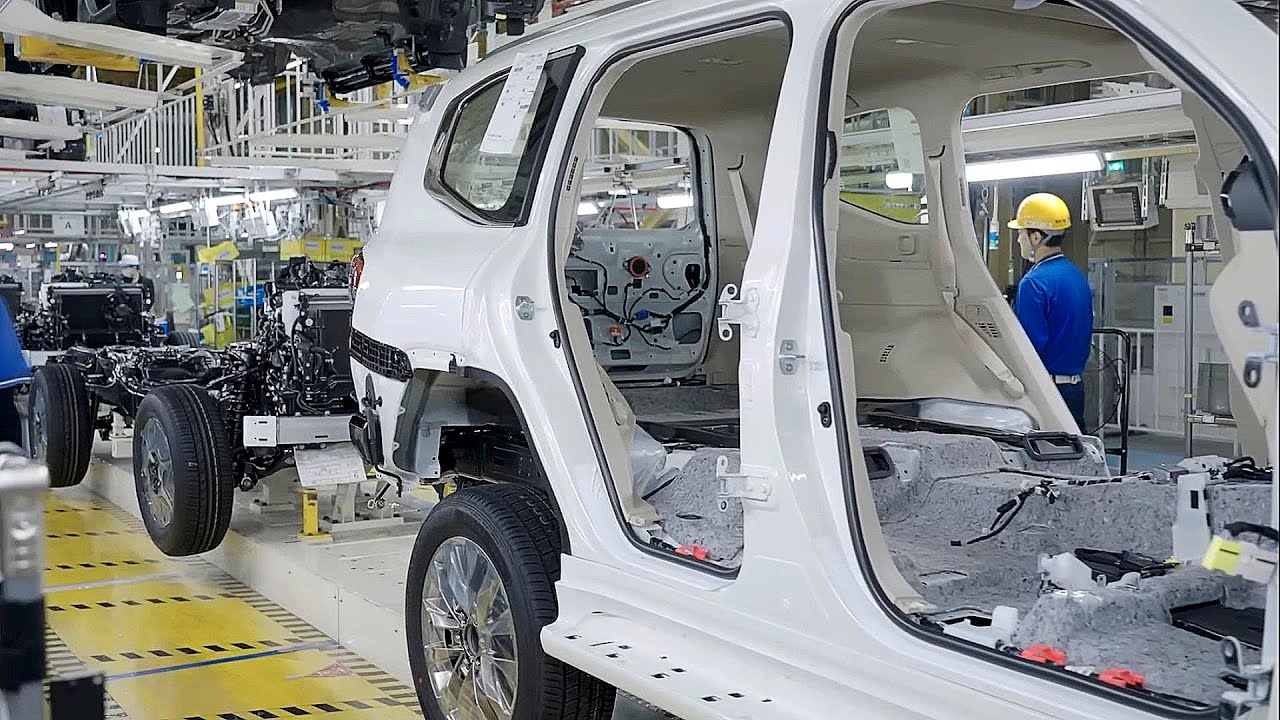How It’s Made London Taxis
Summary
TLDRThe iconic London black cabs, known for their robustness and accessibility, are meticulously crafted with hydraulic presses forming chassis components and spot welding assembling the body. Equipped with a 4-cylinder turbo diesel engine, these taxis feature an 8.5-meter turning circle for easy maneuverability. The manufacturing process, from chassis assembly to painting and final testing, takes approximately two weeks. London's taxis, not always black, are designed for wheelchair accessibility and can accommodate five seated passengers, offering a unique transportation experience.
Takeaways
- 🚖 The iconic London black cabs are internationally recognized symbols of British culture.
- 🏗️ The modern black cab was first introduced in 1948 and currently, there are around 20,000 operating in London.
- 🔧 The cabs are designed to be robust, capable of withstanding approximately 50,000 km of driving each year.
- 🛠️ The manufacturing process involves heavy machinery, such as presses that can exert up to 800 tons of force to shape the chassis.
- 🔩 The taxis are assembled with a cruciform structure, providing strength and durability to the vehicle.
- 🚗 They are equipped with a 4-cylinder direct injection turbo diesel engine for reliable performance.
- 💺 The design accommodates passengers with reduced mobility, featuring a flat floor and high roof for easy access.
- 🖌️ The taxis undergo a meticulous painting process, with an anti-corrosion coat, primer, and multiple layers of paint for a polished finish.
- 🔍 Quality control is严格, with inspections for paint defects and water leaks, ensuring each cab is watertight and ready for service.
- 🔄 Despite their size, London black cabs have a tight turning circle of 8.5 meters, allowing for easy maneuverability in the city.
- ♿️ The taxis are wheelchair accessible, with features like an access ramp and fold-down seats for inclusive transportation.
Q & A
What is the significance of the black cabs of London?
-The black cabs of London are internationally recognized British icons and are considered by many as the best taxi system in the world. They are also a tourist attraction in themselves.
When were the modern Black Cabs first introduced in London?
-The modern Black Cab was born in 1948.
How many black cabs are there on the streets of London today?
-There are about 20,000 black cabs in the streets of London.
Why do the cars need to be robust in the London taxi system?
-The cars need to be robust because a taxi can easily be driven 50,000 km each year.
What is the process used to form the steel panels for the taxi chassis?
-Operators position steel panels into a press which uses hydraulics and air pressure to fold them. The press can apply up to 800 tons of force to form each chassis component.
What type of engine does the taxi use and how is it installed?
-The taxi uses a 4-cylinder direct injection turbo diesel engine, which is hoisted in with the gearbox.
How are the components of the taxi's body assembled?
-Welders assemble the components of the taxi's body using a spot welder, which clamps the sheets together and concentrates electric current into a small spot to melt the metal and form the weld.
What is unique about the design of the taxi's interior for passengers with reduced mobility?
-The taxi's interior is designed with a completely flat floor and a high roof, allowing passengers with reduced mobility to easily enter and exit the vehicle.
What is the purpose of applying an anti-corrosion coat and a gray primer to the taxi's body?
-The anti-corrosion coat and gray primer are applied to the taxi's body to protect it from corrosion and to provide a base for the final color paint.
How is the taxi's paint job checked for quality after it is applied?
-Each painted car moves to the polishing room where technicians check for any dirt, runs, dry spray, or other paint defects under bright lights, and then carefully polish the car.
What is the mandatory turning circle for the taxis and why is it important?
-The mandatory turning circle for the taxis is 8.5 meters curb to curb, which allows them to easily perform u-turns despite their large size.
How long does it take to build a single taxi and what is the final step before it hits the streets?
-It takes about 2 weeks to build a taxi. The final step before it hits the streets is a thorough testing process, including water tests, brake tests, and a driver test at different speeds.
Outlines

Dieser Bereich ist nur für Premium-Benutzer verfügbar. Bitte führen Sie ein Upgrade durch, um auf diesen Abschnitt zuzugreifen.
Upgrade durchführenMindmap

Dieser Bereich ist nur für Premium-Benutzer verfügbar. Bitte führen Sie ein Upgrade durch, um auf diesen Abschnitt zuzugreifen.
Upgrade durchführenKeywords

Dieser Bereich ist nur für Premium-Benutzer verfügbar. Bitte führen Sie ein Upgrade durch, um auf diesen Abschnitt zuzugreifen.
Upgrade durchführenHighlights

Dieser Bereich ist nur für Premium-Benutzer verfügbar. Bitte führen Sie ein Upgrade durch, um auf diesen Abschnitt zuzugreifen.
Upgrade durchführenTranscripts

Dieser Bereich ist nur für Premium-Benutzer verfügbar. Bitte führen Sie ein Upgrade durch, um auf diesen Abschnitt zuzugreifen.
Upgrade durchführenWeitere ähnliche Videos ansehen

How It's Made: Flatware

How to Build a Line-Following Robot | Complete Robotics Tutorial for Beginners

Watch The FIRST 2024 Lexus GX550 Get Built on the Toyota Assembly Line | Capturing Car Culture

How your Toyota Land Cruiser is made? Toyota factory tour in Japan

London taxi drivers develop a different part of the brain

Is Apple's Hydraulic Press iPad Ad Realistic?
5.0 / 5 (0 votes)
